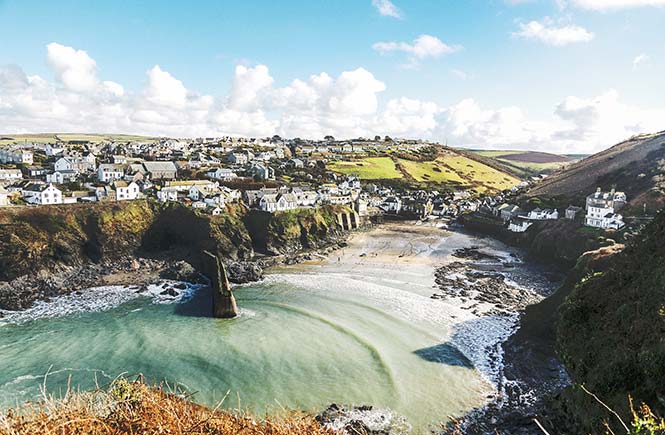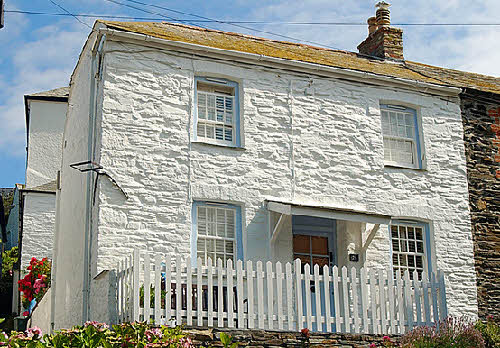
Port Isaac
Port Isaac was a busy coastal port from the Middle Ages to the mid 19th century handling cargoes like stone, ores, limestone, salt, coal, timber, pottery, and heavy commodities. The railway ended the coastal trade by the start of the 20th century. Fishing and fish-processing was important and continues today. Tourism is increasingly important and the village is used as a backdrop to television productions including Poldark (1975–77) and Doc Martin (2004–present).

The Great Western Railway (GWR) ran a service between Bodmin Road (now Parkway) and Wadebridge using running powers from Boscarne Junction (near Bodmin) to Wadebridge. In 1909 the service comprised 4 passenger, 2 mixed, and 2-3 goods trains each way. By 1930 it had changed to 7 passenger, 1 mixed, a passenger Saturday evenings, and 1 goods train run as required each way. The 1930s timetable suggests locos came from St Blazey rather than being out stationed at the terminus. At the turn of the 20th century the GWR proposed to build several light railways in Cornwall including one from a junction on the London South Western Railway near Padstow to Tregurrian. I've added the Amble Valley Light Railway (AVLR) that would have run six and a half miles from Wadebridge to Port Issac via a bridge over the River Camel, into the Amble Valley, Trewornan (quay), Chapel Amble, St Endellion, and Trehatrock (gap). The AVLR serves the parishes of St. Endellion, St Kew, and St Minver with a combined population of 2,879 in 1901 growing to 3,911 in 1961 due to tourism. The terminus would be 4 chains (80 meters) south of the port as it's impractical to run down Middle Street or fund extensive demolitions. The AVLR would have been a Beaching cut.

Operation
GWR trains run to/from Bodmin Road. The
AVLR is a single section with one train in steam. From Port Isaac to Trehatrock
the grade would have been about 1:30
restricting passenger trains to 15 mph, goods trains to 10 mph and a maximum of
8 loaded wagons. Locos would face towards Wadebridge to keep their fire boxes
covered with water and Auto trains would work with their locos at the Port Isaac
end. Auto trains would provide local passenger services with the first in and
last out hauling fitted wagons so possibly classed as mixed. A pannier tank
would work the daily goods train and the passenger train of through coaches.
When required extra fitted freights and tourists trains would be run - summer
Saturdays all passenger trains might comprise through coaches.

As the photos above
and right show the local architecture is random stone some time whitewashed. The
GWR will use corrugated iron partly because it was keen on the stuff at the
start of the 20th century and partly to distinguish Port Isaac from
Drummore.
Photos of the layout
under construction


